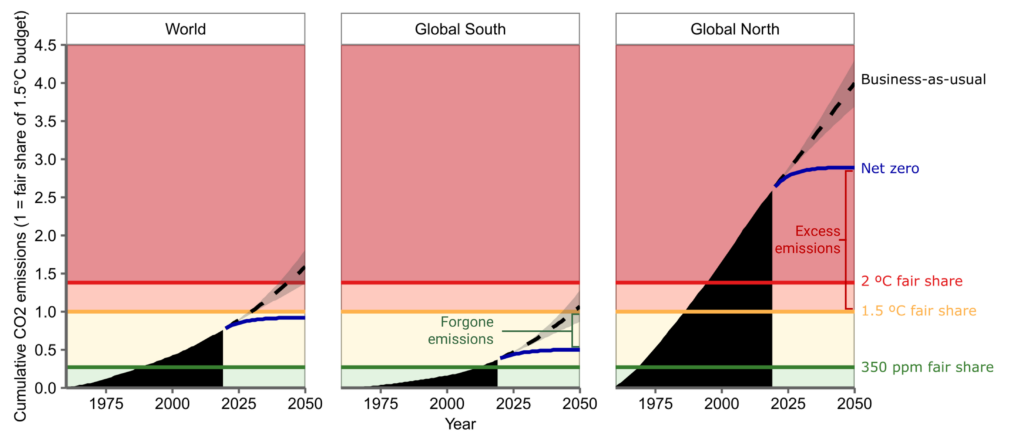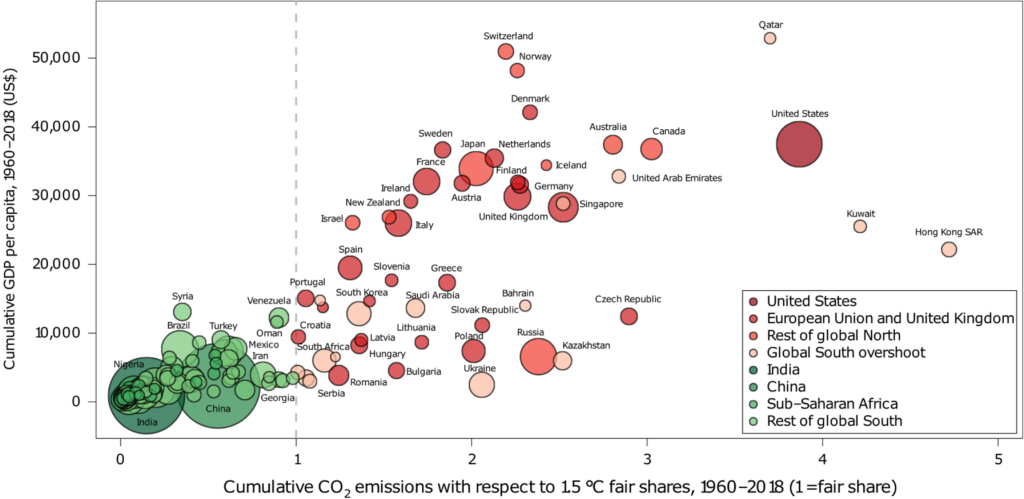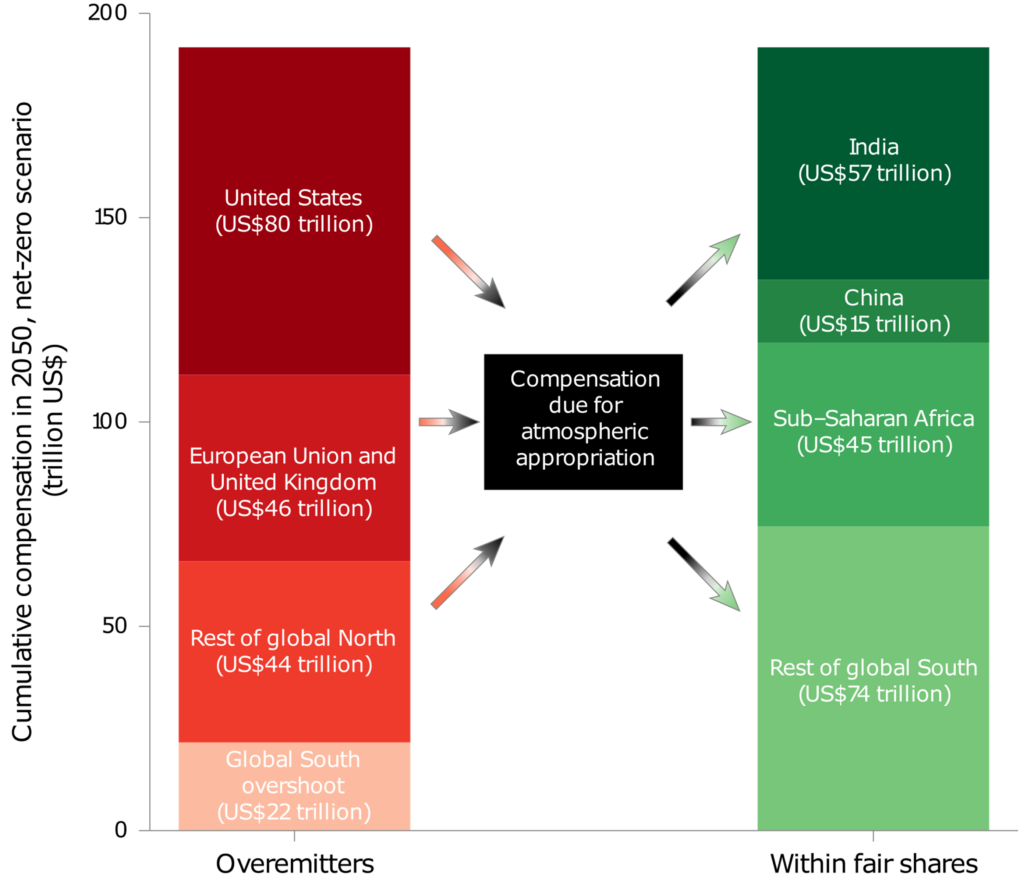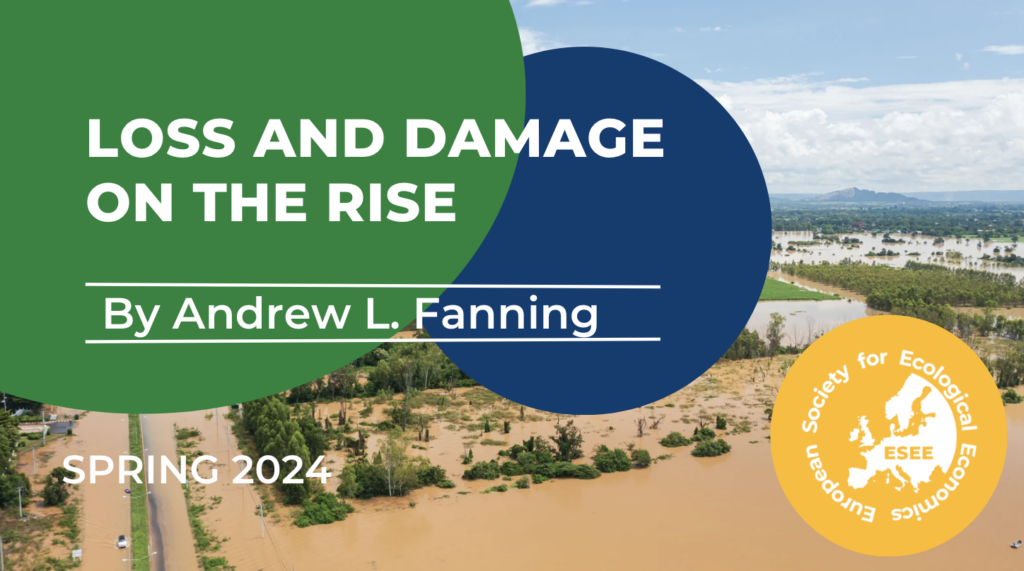

Loss and damage refers to burdens caused by the climate crisis that cannot be avoided through mitigation or reduced through adaptation. Examples include the loss of lives, capabilities, and ecosystem services through exposure to unprecedented heat and sea-level rise, or rebuilding infrastructure and relocating homes after extreme storms and flooding.
Compensation for loss and damage has a long history in climate negotiations – a mechanism was proposed by Vanuatu in 1991 in the run-up to the Rio Summit – but it has only been gaining traction in recent years. Notably, during COP28 held in Dubai last year, countries agreed to create a Loss and Damage Fund, and wealthy, high-emitting countries have collectively pledged more than $700 million USD.
However, climate justice scholars and activists argue that current pledges are minuscule compared to the scale of damages already being felt across the global South. These damages were estimated at more than $100 billion USD in 2022, and are expected to increase as climate records continue to be shattered. Taking a different perspective, others point out that the top 6 highest-paid football players together make as much in a year as the pledges to the Loss and Damage Fund.
While it is obvious that current pledges are woefully insufficient, nations’ obligations to tackle the climate crisis, and the consequences they should face for inaction, are less clear. In fact, Vanuatu has led the way again last year by spearheading a UN resolution calling on the International Court of Justice to provide such clarification.
One way to think about climate compensation is to recognise that the atmosphere is a shared commons, to which all people are entitled to a fair and equitable share. It is well-established that some nations have contributed far more than others to the climate crisis, so the concept of atmospheric commons is useful to determine the extent to which nations have exceeded their fair shares, thereby appropriating the shares of others. In a recent study, Jason Hickel and I analyse nearly 170 countries and propose an empirical method for quantifying financial compensation owed to low-emitting countries by over-emitting ones for the appropriation of atmospheric commons.
We know from climate science that there’s only so much carbon that can be released into the atmosphere to achieve a given climate target, such as keeping global warming to 1.5 degrees Celsius. We obtained total carbon budgets for 350 ppm, 1.5 and 2 degrees warming from the Intergovernmental Panel on Climate Change (IPCC), and divided them across countries using an equality-based approach based on population sizes.
We wanted to know how much each country has emitted in comparison to their equality-based shares historically from 1960, together with a business-as-usual scenario and a scenario where it decarbonises from current levels to ‘net zero’ by 2050. Notably, under this net zero scenario where *all countries* reduce emissions to zero by 2050, we find the World could limit warming to 1.5°C – which is crucial to avoid the worst impacts of climate change (Figure 1).


However, we know the World is not a single entity. We find the global North, which includes 39 countries of the EU, United States, and others, is already 2.5 times beyond its collective fair share of the 1.5-degree carbon budget. Under the net-zero scenario, the global North would overshoot its fair share by more than 3 times, appropriating half of the global South’s fair share in the process. This is deeply unjust, as it effectively forces low-emitting countries to mitigate far more rapidly than would otherwise be required, forgoing their fair shares to balance the excess of over-emitting countries.
Of course, sacrificing fair shares of the carbon budget wouldn’t be so unjust if emitting carbon dioxide didn’t bring such clear benefits in the fossil-dependent economies we have inherited. Figure 2 shows cumulative carbon emissions with respect to 1.5-degree fair shares and GDP per capita from 1960 to 2018. Now there’s some variation, but the general trend suggests a significant increase around $10,000 in GDP per capita for each additional unit of excess emissions. These findings support the view that over-emitting countries have tended to enrich themselves through appropriating more than their fair share of the atmospheric commons.


Using carbon prices from IPCC scenarios that limit warming to 1.5 degrees, we valued excess emissions in monetary terms and calculated that over-emitting countries would owe a total of $192 trillion USD to the rest of the world by 2050 to compensate for their excess (Figure 3). This is equivalent to around $6 trillion USD per year, which puts the current pledges to the Loss and Damage Fund at around 0.01% of the total annual compensation owed by over-emitting countries, according to our estimates. These numbers can seem too big to comprehend, so it’s worth noting that governments already provide around $7 trillion USD per year in fossil-fuel subsidies to support – and clean up after – the sector most responsible for the climate crisis.


We propose a mechanism that distributes these funds to low-emitting countries, based on how much of their fair shares would be appropriated by over-emitting countries. So if a country has more of its fair share appropriated, then it would be entitled to receive more compensation. And similarly, if a country has overshot more of its fair share, then it would be liable to pay more compensation. There’s no question to me that the annual per capita receipts would be truly transformative for many global South countries, although it raises many questions about practical implementation.
Let me emphasise that our study focuses only on compensation that is owed for appropriation of atmospheric commons *assuming the world reaches net zero by 2050*, and this should be considered additional to broader questions about the costs of transition, or adaptation, or the damages that are already baked into a 1.5-degree warmer world.
And also, when it comes to liability to pay, we must pay attention to class inequalities too. Responsibility for excess emissions is largely held by the wealthy classes who wield disproportionate power over production and national policy. They are the ones who must bear the costs of compensation.

